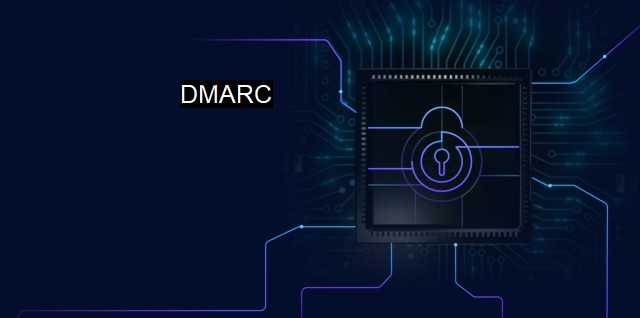What is DMARC?
Enhancing Email Security with DMARC: Mitigating Email Spoofing and Phishing Attacks
Domain-based Message Authentication, Reporting, and Conformance, widely known as DMARC, is a cybersecurity protocol that aims to prevent email spoofing - a technique commonly employed in phishing scams. In the expansive world of cybersecurity and antivirus practices, DMARC has risen as a crucial player in safeguarding digital communication systems, effectively slicing through the rising tide of forged messages.Established as a technological specification by a group of organizations which encompassed PayPal, Google, Microsoft, and Yahoo, DMARC sets a reliable standard for email validation, ensuring that legitimate emails are correctly authenticated. But the question might arise – why is an email authentication critical in the cybersecurity domain? The answer lies mainly in the sharp surge of phishing expeditions, where malevolent entities impersonate trusted domains, tricking unwary users into providing sensitive personal information.
DMARC allies itself with two existing methods of email authentication: Sender Policy Framework (SPF) and DomainKeys Identified Mail (DKIM). Whereas SPF enables the receiving mail servers to ascertain whether the incoming mail is from a domain approved by the domain owners, DKIM enables the receiver's server to inspect if the email was tampered during transition. Together, these two methods function as layers of check and balance, ensuring that email communication remains untampered and originates from trusted sources.
So how does DMARC incorporate both SPF and DKIM to amplify security? Arguably the most crucial function of DMARC is that it tells receiving mail servers what to do when they encounter an email that fails SPF or DKIM check. Prior to DMARC's implementation, mail servers had to decide on their own whether to accept, flag, or reject an email following a DKIM or SPF failure. With DMARC, those decisions have become a part of the domain owner's email authentication policy.
DMARC allows the domain administrators to publish policies in Domain Name System (DNS) records to specify how the domain handles unauthenticated emails. The policies can tell that the mail server should reject or quarantine the dubious mail, or simply report the failure without any action.
Another key feature of DMARC is its power to enable detailed reporting. By providing domain admins with data about who is sending email on their behalf, DMARC aids them to identify and take action against unauthorized senders and potential sources of fraudulent email. The aspect of 'Reporting' not only divulges where the attack originated from, but it also provides insights regarding whether the emails are appropriately authenticated by SPF and DKIM or not.
A few criticisms of DMARC include its complexity to implement, potential challenges with forwarded emails or mailing lists, and the conception that DMARC, on its own, is not sufficient to stop phishing or spam. Meanwhile, its modular approach of connecting SPF and DKIM makes it a compelling solution. The true potential of DMARC is unleashed when it's used as part of a comprehensive security plan. It is vital to remember that cybersecurity does not lie in one singular solution, but in a variety of tools, practices, and layers of protection.
In the age where networks are global and virtual boundaries can be thin, DMARC is a timely and relevant tool upholding the integrity of email communication while serving an essential role in antivirus and cybersecurity efforts. By guarding against domain impersonation, it enhances faith in email ecosystems. Therefore, while it might not completely eradicate cyber threats, it most definitely shapes a fundamental shift towards a safer cyberspace. It is reasonable to posit that DMARC, with its dynamic potency and direct approach, is set to become a mainstay in the course of online data protection.

DMARC FAQs
What is DMARC?
DMARC stands for Domain-based Message Authentication, Reporting, and Conformance. It is an email authentication protocol that helps prevent domain spoofing and email phishing attacks.How does DMARC work?
DMARC works by allowing domain owners to publish policies in their DNS records that specify how to handle unauthenticated and suspicious emails. When receiving email servers receive emails, they can check the DMARC policies and take actions based on them.What benefits does DMARC provide for cybersecurity?
DMARC provides several benefits for cybersecurity, including preventing domain spoofing and email phishing attacks, protecting a company's brand reputation, and improving email deliverability and engagement rates.Is DMARC a replacement for antivirus software?
No, DMARC is not a replacement for antivirus software since it does not directly protect against malware or viruses. Rather, it is an email authentication protocol that complements existing cybersecurity measures, including antivirus software, firewalls, and other email security tools.| | A | | | B | | | C | | | D | | | E | | | F | | | G | | | H | | | I | | | J | | | K | | | L | | | M | |
| | N | | | O | | | P | | | Q | | | R | | | S | | | T | | | U | | | V | | | W | | | X | | | Y | | | Z | |
| | 1 | | | 2 | | | 3 | | | 4 | | | 7 | | | 8 | | |||||||